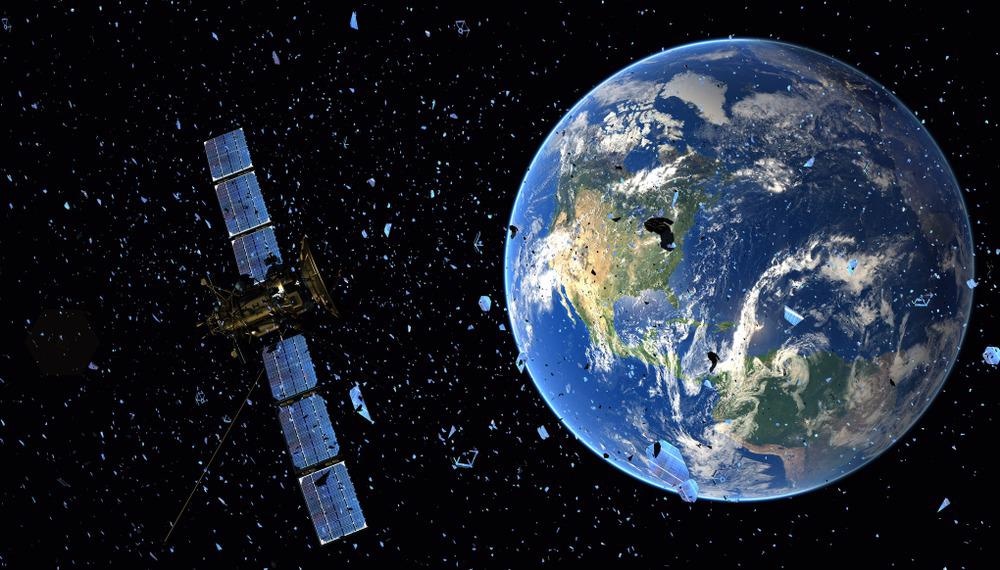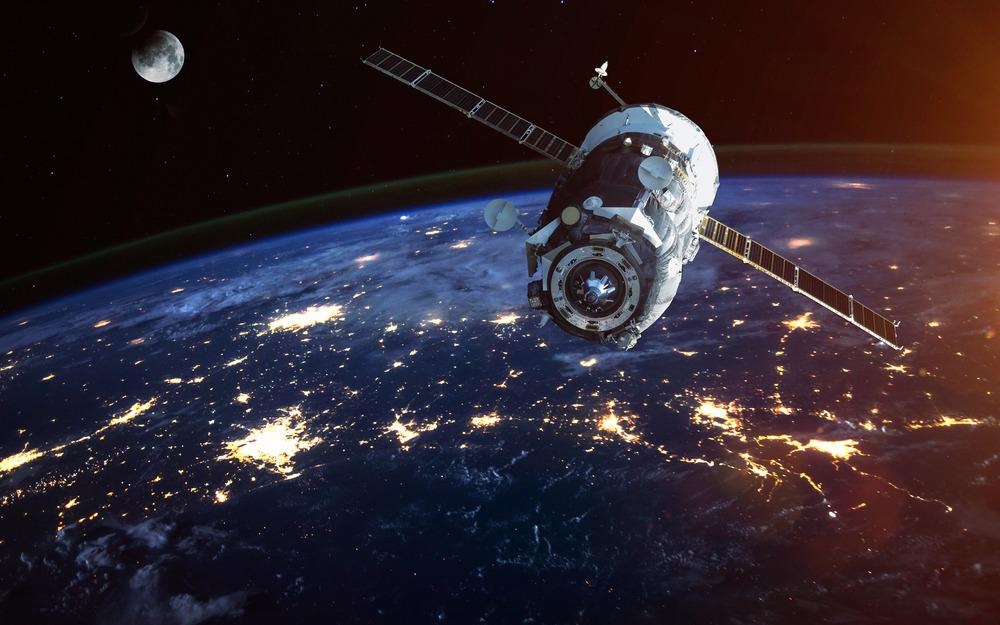Earth’s orbit is littered with over 128 million pieces of space debris smaller than 1 cm, 10,000 pieces larger than 10 am, and more than 3,000 defunct satellites. The 4,500 active satellites currently orbiting Earth have to be careful not to hit this debris, as well as spacecraft like the International Space Station (ISS). Astroscale, a Japanese private space company, has been operating its ELSA-d mission to demonstrate a proof of concept for its ELSA technology, removing space debris from our orbit.

Image Credit: Mike Mareen/Shutterstock.com
What is Space Debris and How Much of a Problem Is It?
The European Space Agency has estimated that there are around 9,500 tons of space debris in Earth’s orbit, with 29,140 discrete debris objects having been tracked by the Space Surveillance Network already.
Earth’s orbit is littered with over 128 million pieces of space debris smaller than 1 cm, 10,000 pieces larger than 10 am, and more than 3,000 defunct satellites.
The next 10 years will see over 10,000 more satellites launched into Earth’s orbit, and global technology companies like Amazon and Google are planning even more in a bid to deliver high-speed internet to every corner of the globe.
CUTE: Characterizing Exoplanet Atmospheres with CubeSats
With all of this sensitive equipment floating around in orbit, littering space with bits of broken-up spacecraft, discarded parts, and decommissioned satellites is starting to become a big problem.
Satellites need to conduct evasive maneuvers to avoid space debris, and when they fail the whole satellite can become useless.
Leaving defunct satellites and pieces of space debris in orbit results in the creation of even more space junk as satellites and other objects crash into each other.
As more space debris is created, the risks of a collision continue to increase in a vicious circle.
AstriaGraph, a web product that uses real-time 3D maps of the low Earth orbit (LEO) to display where satellites and other objects are in space, illustrates the problem of space debris perfectly.
Looking at the IBM-hosted web page shows how many inactive satellites, rocket bodies, and other kinds of debris clog up the orbit for the relatively small number of active satellites that need to be there.
Astroscale’s ELSA-d Successful Trials So Far
The End-of-Life Services by Astroscale (ELSA) program retrieves spacecraft for satellite operators who want to do their part in keeping space tidy.
ELSA-d (demonstration) is the first mission, currently underway, demonstrating ELSA’s core capabilities.
ELSA-d consists of a servicer satellite weighing 175 kg and a client satellite weighing 17 kg.
The servicer satellite contains the ELSA system, while the client satellite acts like a defunct satellite for ELSA to capture and bring back to Earth.
ELSA-d has already completed phases one and two of its mission: launch and early orbit phase (LEOP), and commissioning.
These proved that ELSA is capable of launching, starting its orbit, and getting the technology on board up and running.
The latest phase to be completed is phase three: capturing space debris that is not currently tumbling.
On August 25, 2021, ELSA-d completed a significant mission phase with a successful test of the magnetic capture system on board.
This test proves that ELSA can dock with a client like a decommissioned satellite in space.

Image Credit: Vadim Sadovski/Shutterstock.com
In the first part of the test, a dummy satellite “client” was locked in place by the ELSA craft’s mechanical locking mechanism.
Then, the mechanical mechanism was unlocked, proving that the magnetic locking system on board could also work unaided.
The next phases for ELSA-d to demonstrate have never been done before in space. In phase four, the server satellite will have to capture the client satellite while it is “tumbling” through space.
Phase five will require the server satellite to find the client satellite in space and complete diagnostic checks.
Phase six will see ELSA-d successfully re-entering Earth’s orbit after exiting it. Phase seven closes out the ELSA-d program and may end with a successful mission proving the ELSA system’s capabilities.
ELSA-d is the first-ever end-to-end space debris removal mission to be attempted.
If it successfully completes all seven phases of the mission, then it will be the first technology that is fully capable of removing space debris from the LEO.
The next phase of the mission—capturing a tumbling object in space—is critical.
Not only has it never been accomplished before, but it is also an essential capability for retrieving space debris. The majority of debris in space is tumbling, having come from a collision, or actively discarded from another spacecraft.
If ELSA-d can demonstrate tumbling capture well, then future ELSA fleets would be able to clean up space, capturing multiple types of defunct objects as well as just decommissioned satellites that are still able to keep their orbit.
How Urgently Do We Have to Address Space Debris?
While there are tens of thousands of pieces of space junk and thousands of defunct satellites in space, there is still a lot of room in the LEO for active satellites and spacecraft to move around.
Spacecraft are not generally threatened by space debris, although satellites do occasionally have to move out of the way of incoming objects.
Satellites and spacecraft still perform hundreds of collision avoidance maneuvers each year.
If the number of satellites in orbit explodes as it is expected to, this problem will become more acute.
If the remaining phases of the ELSA-d mission are successful, then it will become a valuable technology in the next few years.
References and Further Reading
Astriagraph. IBM. [Online] http://astria.tacc.utexas.edu/AstriaGraph/.
Astroscale. (2021). “Astroscale’s ELSA-d Successfully Demonstrates Repeated Magnetic Capture.” [Online] https://astroscale.com/astroscales-elsa-d-successfully-demonstrates-repeated-magnetic-capture/.
Astroscale. (2021). “ELSA-d Press Kit 2021.” [Online] https://astroscale.com/wp-content/uploads/2021/08/ELSA-d-Press-Kit-2021.pdf.
O’Callaghan, J. “What Is Space Junk and Why Is It a Problem?” Natural History Museum. [Online] https://www.nhm.ac.uk/discover/what-is-space-junk-and-why-is-it-a-problem.html.
Disclaimer: The views expressed here are those of the author expressed in their private capacity and do not necessarily represent the views of AZoM.com Limited T/A AZoNetwork the owner and operator of this website. This disclaimer forms part of the Terms and conditions of use of this website.